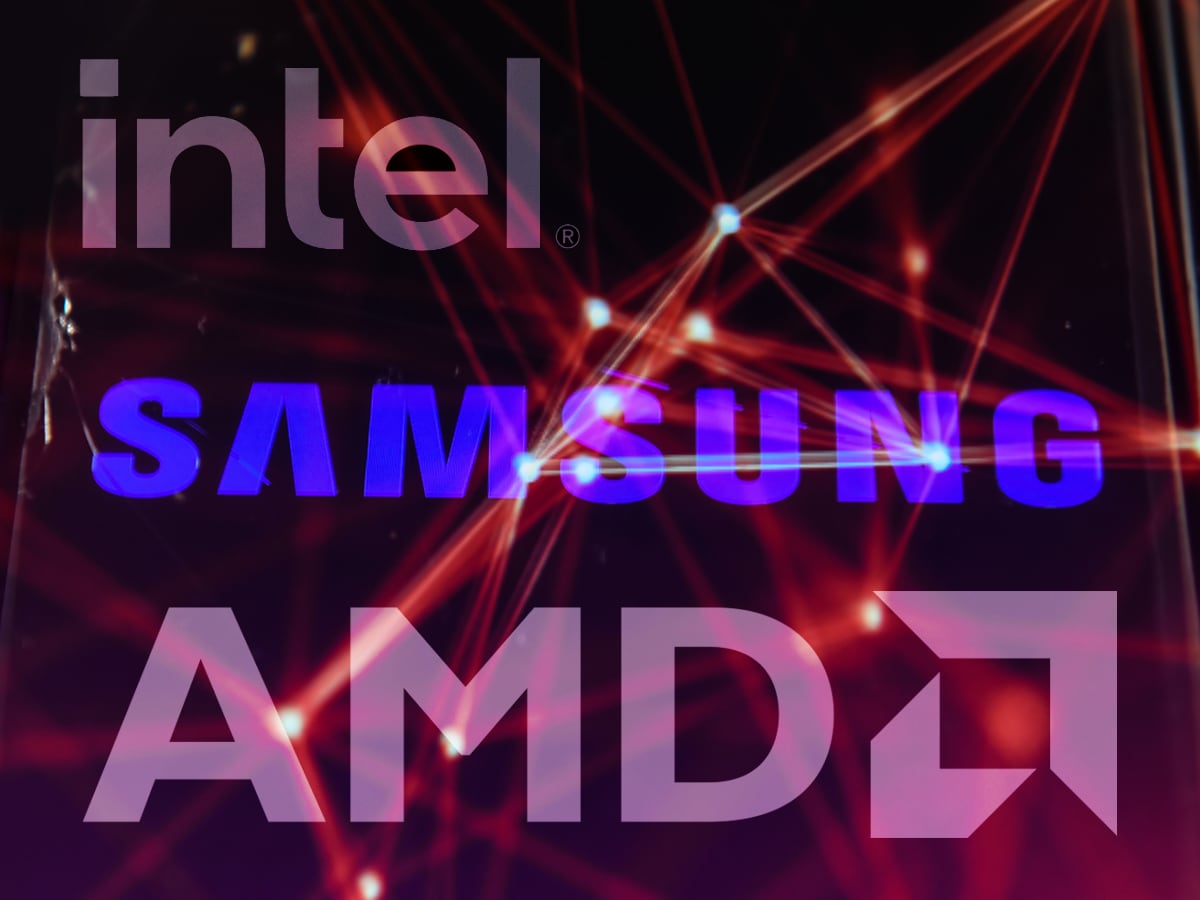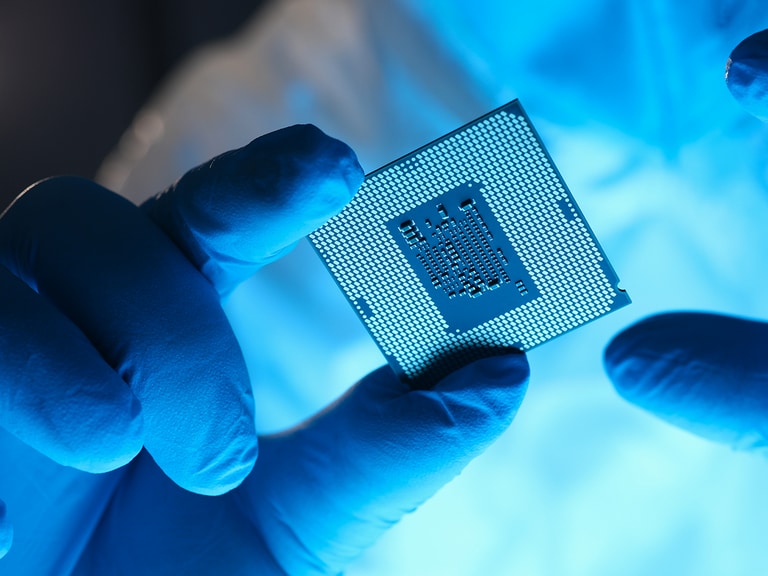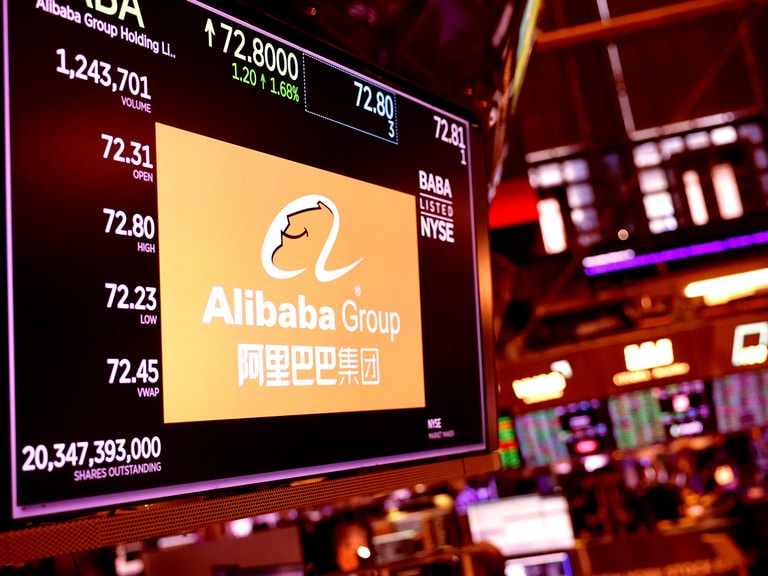AMD’s [AMD] share price has fallen circa 10% since 26 April, as increased competition from rival Intel [INTC] weighs on sentiment.
However, those concerns might be overdone, with the current dip in AMD’s share price presenting a potential opportunity to buy into a high-quality stock.
Intel plans to spend $20bn on two Arizona-based manufacturing plants, sticking with its 7nm process, while AMD is moving to Taiwan Semiconductor's [TSM] 5nm process. Chris Caso, an analyst at Raymond James, reckons AMD has a “durable technical advantage” over Intel, and its growing server business is nothing to be sniffed at.
"We think the stock's pullback has been driven by improved sentiment that Intel will solve their manufacturing challenges, which will reverse AMD's successes. We're taking the other side of that view," Caso and his fellow analysts wrote in a note to clients. "Now that Intel has committed to internal manufacturing, we think it's unlikely that Intel ever regains a transistor advantage vs. AMD."
“We think the stock's pullback has been driven by improved sentiment that Intel will solve their manufacturing challenges, which will reverse AMD's successes. We're taking the other side of that view” - Chris Caso, analyst at Raymond James
What could power AMD’s share price higher?
AMD’s share price gained 88.7% last year as the pandemic fuelled demand for its products. Yet, so far this year the stock is down circa 17% as the semiconductor shortage, tech selloff and renewed competition fears come to the fore.
Despite all that, AMD’s underlying business is nothing if not strong. The company’s computing and graphics segment was responsible for pulling in $2.1bn in net revenue in the first quarter of 2020, up 46% year-on-year. Driving these gains were sales of AMD’s Ryzan processors. The semiconductor giant has also seen exceptional growth in its enterprise and server business, up 286% to $1.4bn in Q1.
88.7%
AMD’s share price rise in 2020
Management is guiding for a revenue surge of 50% this year, with growth expected in the personal computer, gaming and data centre markets. Zacks also reports that AMD is considering expanding into high growth markets, which should help sustain momentum.
AMD’s forward 27.55x price to earnings multiple seems expensive, however, an average analyst price target of $104.91, according to Yahoo Finance, would net investors a 40% upside based on Tuesday’s closing price. Analysts at Mizuho have a $107 price target on the stock, a 42.9% upside, while Raymond James has a $100 price target.
The semiconductor investment theme
Gamers worried that the semiconductor shortage might mean a hold-up in the production of AMD’s high-end graphics card can breathe a sigh of relief. Mid-May saw the tech firm lock in a deal with GlobalFoundaries to produce a minimum annual capacity of 12nm and 14nm nodes up until the end of December 2024, which are used in AMD’s CPUs and GPUs.
The deal plays out in the wider context of a global shortage of semiconductors, with the semiconductor investment theme up circa 65% over the past 12 months, according to our investment screener.
65%
Rise of the semiconductor theme over the past 12 months
Not only did the pandemic lead to a backlog in production as the fabrication plants churning out semiconductors closed, but it also led to a greater demand for video game consoles, televisions and high-end gaming PCs — just try getting your hands on a PlayStation 5 right now.
Part of the issue is that semiconductor manufacturing has increasingly become more and more specialised as companies like AMD outsource production.
Samsung [005930.KS] is the current world leader in terms of production capacity, accounting for almost 15% of worldwide chip production, followed by TSMC and then Micron [MU]. At a country level, South Korea accounts for 25% of manufacturing capacity, Taiwan circa 23%, and Japan over 15%. The US and China lag in fourth and fifth spots, while the whole of Europe is in seventh position, according to data from the Semiconductor Industry Association.
To become more resilient against any future shortages, the US, EU and China have all green-lit plans to spend billions ramping up semiconductor production capabilities. President Biden has announced a $50bn plan for chip making, while China is looking at spending $1trn on high-tech industries, with an emphasis on chip making.
“There’s a big lag between from when a [fabrication plant] goes into construction and when chips come out. So, frankly, we are looking at [a] couple of years” - Jim Whitehurst, IBM President
Yet Jim Whitehurst, IBM [IBM] President, has warned that the shortage could go on for a couple of years yet.
“There’s a big lag between from when a [fabrication plant] goes into construction and when chips come out,” Whitehurst told the BBC. “So, frankly, we are looking at [a] couple of years.”
The longer it goes on, and the more scarce semiconductors become, then the prices of everything from computers to electric vehicles could rise.
In the meantime, market leader Samsung isn’t likely to be troubled.
“For the foreseeable future I believe we can maintain our market share, if not increase it,” a Samsung executive told the Financial Times.
Disclaimer Past performance is not a reliable indicator of future results.
CMC Markets is an execution-only service provider. The material (whether or not it states any opinions) is for general information purposes only, and does not take into account your personal circumstances or objectives. Nothing in this material is (or should be considered to be) financial, investment or other advice on which reliance should be placed. No opinion given in the material constitutes a recommendation by CMC Markets or the author that any particular investment, security, transaction or investment strategy is suitable for any specific person.
The material has not been prepared in accordance with legal requirements designed to promote the independence of investment research. Although we are not specifically prevented from dealing before providing this material, we do not seek to take advantage of the material prior to its dissemination.
CMC Markets does not endorse or offer opinion on the trading strategies used by the author. Their trading strategies do not guarantee any return and CMC Markets shall not be held responsible for any loss that you may incur, either directly or indirectly, arising from any investment based on any information contained herein.
*Tax treatment depends on individual circumstances and can change or may differ in a jurisdiction other than the UK.
Continue reading for FREE
- Includes free newsletter updates, unsubscribe anytime. Privacy policy





